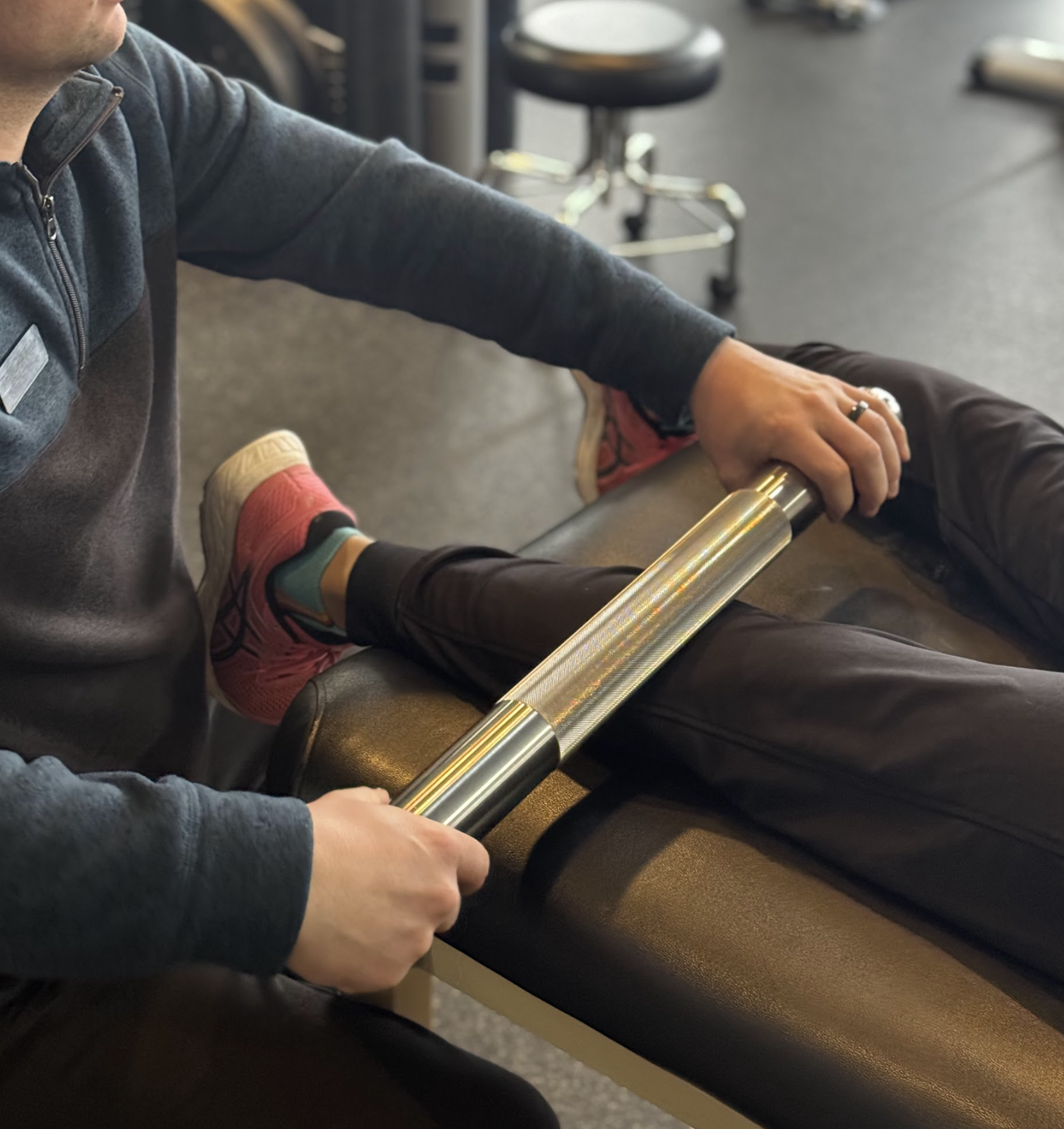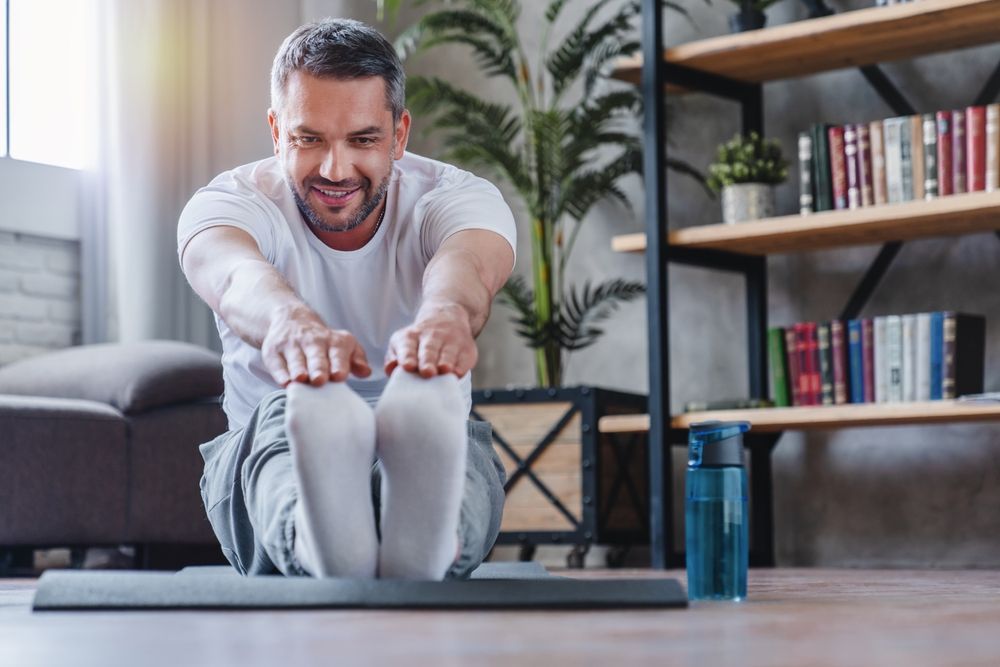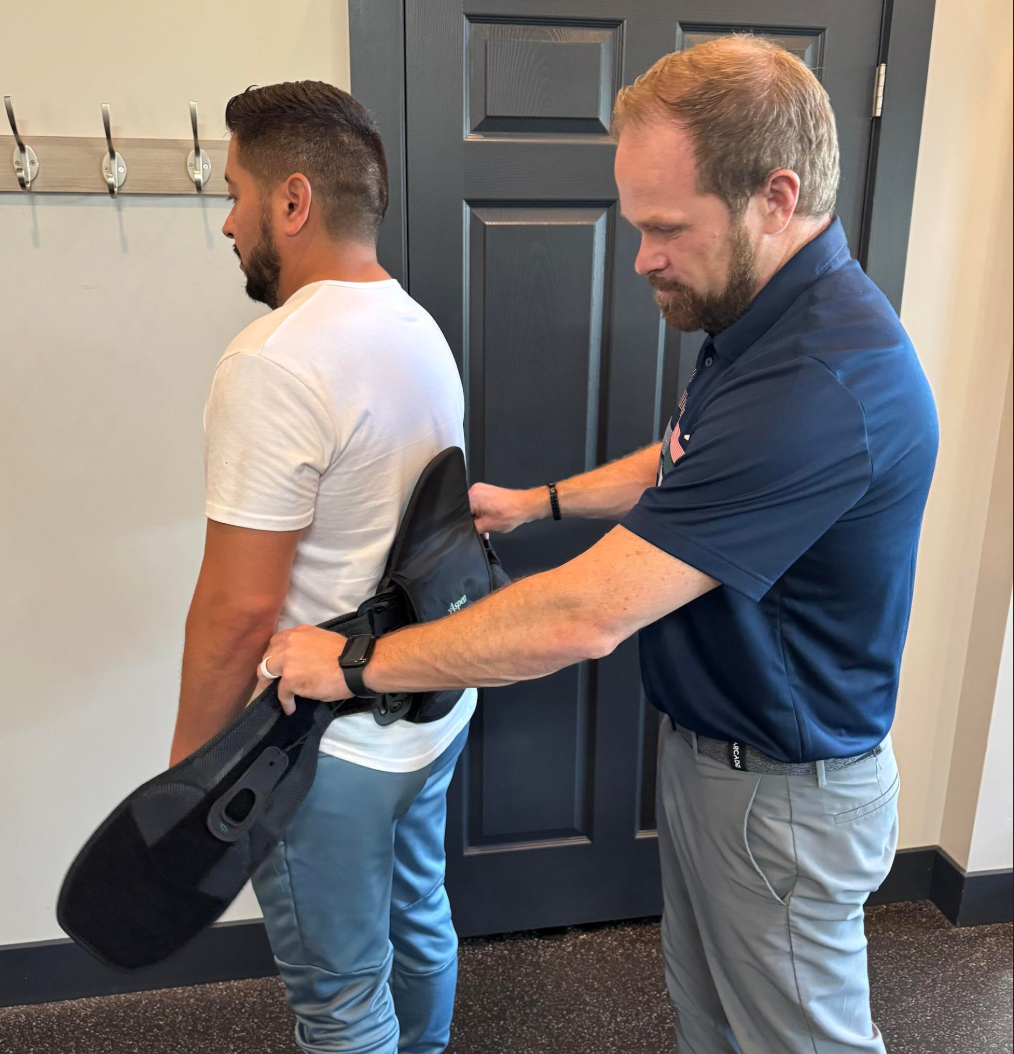Share this article:
Written by: Advanced Physical Medicine

What is Sciatica Pain & Its Symptoms
Sciatica is not a standalone condition; it can be better explained as a symptom indicating an underlying issue, often related to the compression or irritation of the sciatic nerve. The sciatic nerve, the longest nerve in the human body, extends from the lower back, traversing through the buttocks and down each leg. Pain associated with sciatica primarily occurs along this nerve pathway. Individuals grappling with sciatic pain may experience a range of sensations, including sharp shooting pain, numbness, tingling, and weakness.
Triggers for Sciatica Pain
Understanding and being mindful of triggers is a cornerstone in the healing journey from sciatic pain. Here are some triggers for flare ups:
- Poor Posture: Prolonged slouching or maintaining improper posture can strain the spine, potentially triggering sciatic pain.
- Heavy Lifting: Jobs or activities involving frequent heavy lifting put added stress on the spine, potentially intensifying sciatica. Employing proper lifting techniques is essential for prevention.
- Sedentary Habits: Extended periods of sitting, common in today's lifestyle, can contribute to sciatic pain. Taking breaks, incorporating stretches, and staying active can help alleviate discomfort.
Identifying and addressing these triggers empowers individuals in their journey to manage sciatic pain effectively. For personalized advice and targeted solutions, consulting with a healthcare professional is recommended.
4 Signs of Sciatica Improving
Witnessing signs of improvement in sciatica is a positive step in your journey to recovery. However, it's essential to recognize that improvement doesn't equate to complete healing. Proceed with caution to avoid triggering flare-ups, understanding that the healing process can manifest in various ways. The following signs provide valuable insights into the positive changes occurring, indicating that your efforts and treatments are making a difference. Let's explore these indicators of progress on the road to sciatic pain relief.
1.)Pain Reduction
One general, clear, and yes, obvious sign of sciatica improving is pain reduction. Experiencing a reduction in the intensity and frequency of sciatic pain is a reassuring and unmistakable sign that your efforts and treatments are positively impacting the healing process. This improvement is a visible indicator, but it's crucial to approach it with mindfulness.
Reduced pain doesn't necessarily signify the issue is fully resolved. Caution becomes paramount to avoid triggering flare-ups. While you navigate this phase of recovery, consider incorporating gentle exercises and stretches recommended by your healthcare professional to maintain flexibility.
2.)Reduced Muscle Spasms
Similar to the notable relief experienced through pain reduction, a clear and reassuring signal of sciatica improving is the reduction of muscle spasms. A noticeable decrease in both the frequency and intensity of these spasms is very positive progress in your healing journey.
Just as with pain reduction, improvement doesn't mean the issue is fully resolved, emphasizing the importance of caution to prevent potential flare-ups. To sustain this relief, consider incorporating gentle exercises and stretches recommended by your healthcare professional. These practices aim to alleviate tension and support ongoing improvement. Additionally, prioritize aspects like hydration and nutrition, recognizing their impact on muscle health and their role in diminishing spasms.
3.)Increased Strength
Another notable sign of progress in sciatica recovery is the evident increase in strength. This positive development signifies that the muscles, previously weakened by sciatic pain, are beginning to become more responsive.
Observing this improvement involves noticing a substantial increase in muscle strength, especially in the areas directly affected by sciatic pain. The significance lies in the understanding that enhanced strength reflects a gradual recovery of the muscles from the impact of sciatica, promoting stability and resilience.
4.)Straight Leg Raise Test
The straight leg raise test is a diagnostic evaluation commonly used to assess sciatic nerve involvement and monitor improvement in sciatica. To perform this test, lie on your back, and a healthcare professional will gently lift one of your legs, keeping it straight.
During the test, a healthcare professional gently lifts one leg while the patient lies on their back, noting the point at which discomfort or pain is felt. As recovery progresses, increased tolerance and reduced discomfort during the test become positive indicators of improvement. This test serves as a measurable and practical way for healthcare professionals to gauge the extent of sciatic involvement and monitor the effectiveness of treatments over time. Regular performance of the straight leg test provides valuable data, contributing to a comprehensive understanding of the individual's sciatic recovery process. Always consult with your healthcare professional for personalized insights tailored to your unique situation.
What You Can Do to Keep Improving
As you journey through sciatic recovery, there are proactive steps you can take to foster continued improvement and enhance your overall well-being. Here are practical measures to integrate into your daily routine:
Consistent Exercise Routine:
- Engage in a tailored exercise program, emphasizing stretches and strengthening exercises recommended by your healthcare professional.
- Prioritize activities that promote flexibility, mobility, and overall muscle health.
Hydration and Nutrition:
- Stay adequately hydrated to support overall muscle health and recovery.
- Maintain a balanced diet rich in nutrients that contribute to the well-being of your muscles and nervous system.
Regular Breaks and Movement:
- If your daily routine involves prolonged periods of sitting, take regular breaks to stand, stretch, and move around. Additionally, you can spend time learning about office ergonomics to ensure a proper posture.
- Incorporate brief stretching sessions into your routine to prevent stiffness and promote circulation.
Stress Management:
- Explore stress-reducing practices, such as meditation, deep breathing exercises, or activities that bring relaxation.
- Stress management contributes to overall well-being and can positively impact your body's response to sciatic discomfort.
Follow Healthcare Guidance:
In your journey towards sciatic recovery, the guidance and expertise of healthcare professionals play a pivotal role. Adhering to the advice and recommendations provided by your healthcare professional is the compass that steers you through the path of healing. Regular attendance of scheduled appointments, proactive communication about any changes in symptoms, and active engagement in your personalized treatment plan will speed the process of your recovery.
Remember, your sciatic recovery is a collaborative effort, and your healthcare professional is there to guide and support you every step of the way. Whether it's monitoring progress through diagnostic tests like the straight leg raise test or implementing targeted exercises, their expertise forms a valuable resource on your path to recovery.
Connect with Us:











